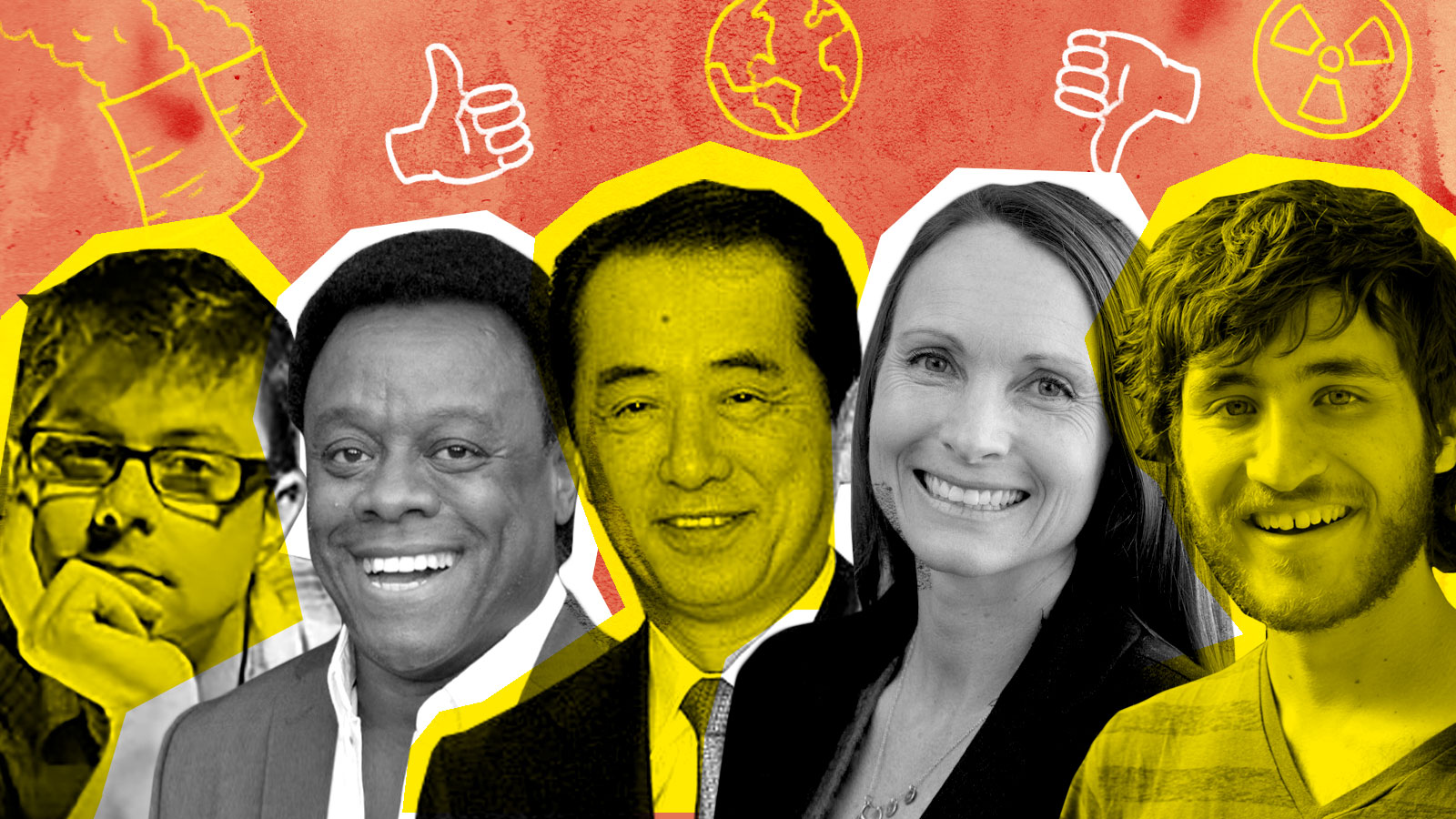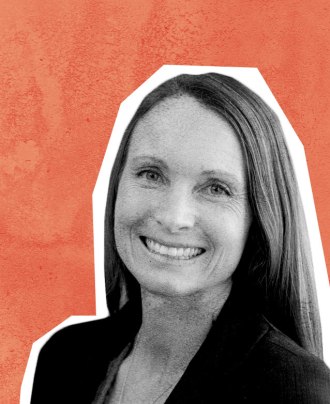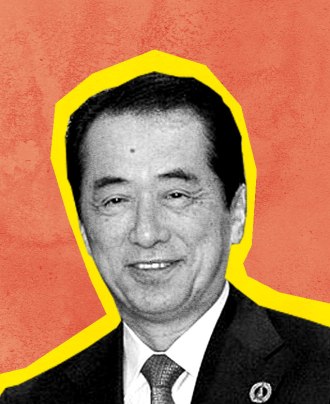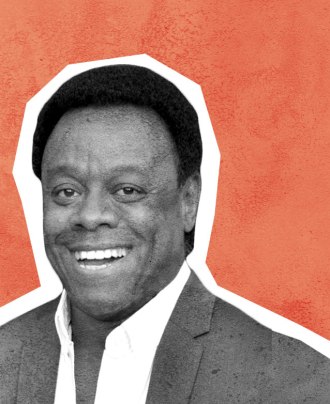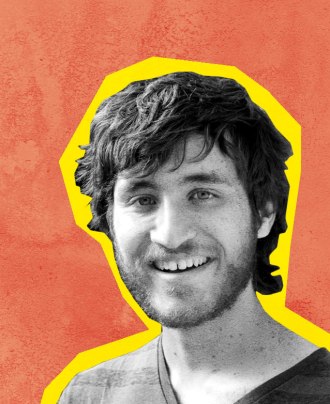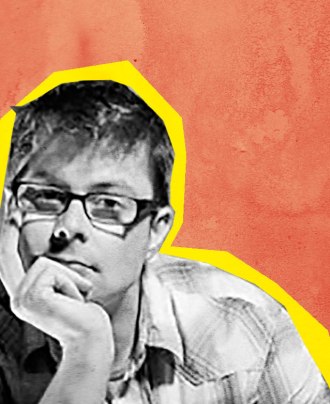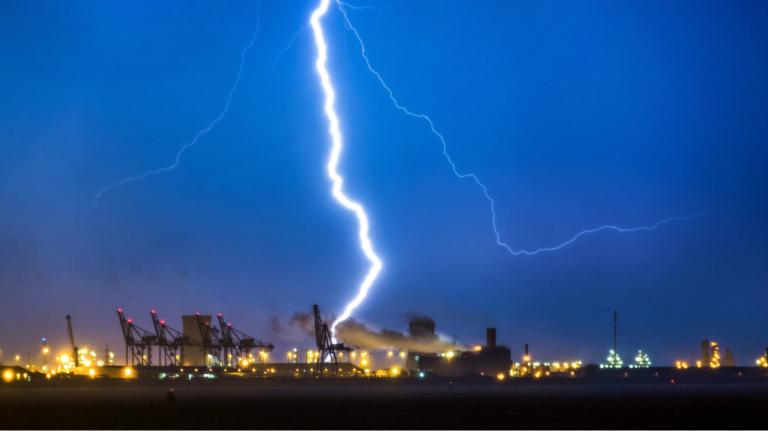The debate over nuclear energy has never seemed more important. After weighing every study on the subject, teams of scientist have predicted that warming of 1.5 degrees C (2.4 degrees F) above pre-industrial levels would bake 1.5 billion people in life-threatening heat waves at least once every five years, bleach coral reefs, and cause crop failure. And according to the Intergovernmental Panel on Climate Change, there’s no way to avoid that scenario without using nuclear power. After all, nuclear fission is the world’s second-largest source of low-carbon electricity after hydropower.
Yet here in the United States, utilities are planning to shut down nuclear power plants that are producing more than twice as much electricity as all the solar panels in the country. The main reason is the cost. Today’s reactors are so expensive that some say it would be better to invest in other options — fusion, batteries, or maybe a better version of nuclear.
Of course, it’s impossible to disentangle nuclear energy from the specter of nuclear war, its high-profile disasters (like Fukushima or Chernobyl), or from its legacy of poisoning vulnerable people, such as the Navajo and Bikini islanders.
Opinions about nuclear power are cast in granite. They don’t bend under pressure. They emerge unchanged after slamming into mountains of contrary evidence. Or at least that’s how it seems. But these five people bring a special insight into this debate, because they once stood on the other side.
The unlikely employee
Given Kristin Zaitz’s profile, you might think she’d be the last person to take a job at a nuclear power plant. She’s a trail-running, home-birthing, farmers-market shopping mother of three. She grew up in the foothills of the Sierra Nevada Mountains in California, raised by the kind of back-to-the-land parents who prohibited flushing the toilet after peeing to save water. Zaitz started hiking as soon as she was big enough to carry a pack, often traipsing through the mountains for weeks with her uncle, a Sierra Club guide who had donated a big chunk of his life savings to Greenpeace (a longtime foe of nuclear power). At an age when other teenagers were starting to party, she was trekking up glaciers with her snowboard.
Her family talked about protecting the environment all the time, but the subject of nukes never came up. But when she went to California Polytechnic State University and found her group of likeminded people, she discovered she was anti-nuclear by clan, way of life, and birth. It came with the package.
In a class on public speaking, Zaitz got an assignment to research a controversial topic and picked nuclear energy. As she leafed through a stack of books in the university library, one preconception after another shattered.
“I had this image of nuclear waste from the Simpsons as glowing green bars that you picked up with tongs, or barrels oozing green goo,” she said. “I learned that it was solid fuel rods encased in dry casks, which is benign compared to particulate air pollution spewing everywhere.”
When she researched wind, solar, and other renewable sources, she began grappling with the amount of land solar panels would require to replace fossil fuels, the thousands of birds that wind turbines kill, and the damage hydropower dams do to river ecosystems. “I think my big realization was that every form of energy has a downside,” Zaitz said. Her speech in front of the class ended up being fairly neutral, not the anti-nuclear talk she’d expected to deliver.
When she graduated in 2001, a door opened for an internship at the Diablo Canyon Power Plant just up the road, and she tiptoed through. “I took the internship for stupid reasons,” she said. “I had a boyfriend in town, and I needed a job.”
At this point she knew that a lot of the worries people had about nuclear power were overblown, but she also figured there must be a kernel of truth behind people’s aversion to it. Zaitz soothed her qualms about her internship decision by telling herself that maybe she could serve as a watchdog on the inside and help anti-nuclear advocates pounce on problems at the plant. She was surprised to find that the workers there didn’t mind her scrutiny, because it was an established part of the nuclear industry’s “safety culture” to encourage probing questions. Older engineers were encouraging, kind, and often staunch environmentalists.
“This wasn’t Homer Simpson eating doughnuts in the control room,” she said. “They were awesome. It just didn’t seem possible that these people were covering up some awful conspiracy.”
And so she stayed.
“I ended up loving the job, and the people, and ditching the boyfriend,” she laughed.
Because she was a civil engineer, Zaitz got to scuba dive in the kelp forest around the plant to inspect the water intake system and rappel down the reactor containment domes looking for cracks while taking in the beauty of her surroundings. Humpback whales played in front of her workplace. She marveled at the way nature and reactors producing as much electricity as three coal plants could exist in harmony. As the years passed, she came to believe that plants like this produced the most environmentally friendly, and safest, source of energy.
In 2016, when the state of California and Pacific Gas and Electric, which owns the Diablo Canyon plant, began talking about shutting the reactors down, it hit Zaitz like a punch to the gut. She knew she could get another job easily enough, but she was worried about the climate.
“I’d always thought of this as the jewel of the country’s nuclear fleet — if it gets closed prematurely then we could be looking at early shutdowns for all the plants,” Zaitz said. “We could lose half of the United States’ clean electricity at a time when we are painting our faces and holding up signs at climate marches. The thought of it made me feel sick.”
In 2011, Zaitz and her colleague Heather Matteson, a reactor operator, decided it was on them to stop that from happening. They hesitated out of fear they might get fired: After all, they were opposing the course of action that PG&E executives — their bosses — wanted. But a little research showed them that the company couldn’t restrict what employees did on their own time.
The pair decided to start Mothers for Nuclear because, as mothers themselves, they figured they could target an audience that doesn’t get a lot of direct attention from activists. “Throughout history, women have been the ones looking out for things that might harm their families,” Zaitz said. “We think it’s a group super motivated to save the planet.”
For the last few years they’ve been organizing through a website and social media, handing out fliers at local farmers markets, writing op-eds, and meeting with politicians in Sacramento and Washington, D.C. They made a trip to Fukushima last February to see for themselves what a nuclear accident looked like.
Zaitz’s stance led to some hard conversations with old friends. Sometimes people assume that she’s being paid to promote nuclear power. (It’s all on her own dime and time.) But most people are interested in her expertise and her story: “Support for nuclear power is not something that comes naturally to the friends of mine who are herbalists and homeschoolers and midwives,” she wrote on the Mothers for Nuclear website. “But they love me and trust me. What I find most moving is the willingness of everyone to not just listen but also to ask questions.”
The former prime minister
Naoto Kan, who became prime minister of Japan in 2010, was an ardent foe of nuclear weapons, but nuclear energy was another matter. That seemed safe and necessary. After all, Japan lacked its own fossil fuel resources, and the power of the atom looked like the solution. When Kan took office, Japan was generating some 60 percent of its electricity from imported coal, oil, and gas, while getting 30 percent of its electricity from nuclear plants. The country had plans to scale up nuclear power to meet its climate change commitments under the Kyoto Protocol and other agreements while simultaneously decreasing its dependence on imported fossil fuels.
Then, in March 2011, an earthquake sent colossal 130-foot waves crashing over the towns of northeastern Japan killing some 16,000 people. The tsunami engulfed the Fukushima Daiichi Nuclear Power Plant, destroying its safety systems. The plant’s cooling systems failed, hydrogen gas buildup in containment domes led to explosions, and several reactors melted down and released radioactive material into the air and sea. That disaster changed everything for Kan, including his mind. He resigned his post in the summer of 2011 and has since become a nuclear energy abolitionist, traveling the world and speaking at protests.
“Before Fukushima, I was pro-nuclear,” he said at an anti-nuclear rally in France last year. “But with Fukushima, we almost had to evacuate millions of people, and I realized we had to stop nuclear power.”
Before Fukushima, most Japanese people were convinced that a nuclear disaster would never occur in a country as detail-focused and technologically advanced as Japan, one under the watch of its savvy engineers, Kan explained in his book, My Nuclear Nightmare. “Our laws, our institutions, our government and economy, even our culture had revolved around the conviction that a nuclear accident would not occur,” he wrote. “One could say we were totally unprepared, so when an accident actually happened we were unable to handle it.”
Immediately after Kan learned that the earthquake and tsunami had caused a cooling-system failure at Fukushima, he asked the chair of the country’s Atomic Energy Commission to plot out a worst-case scenario. If everything went wrong, the chair said, everyone within 100 miles of the plant would have to evacuate. Tokyo, one of the most densely populated cities in the world, is just 140 miles from the plant, and its proximity to an irradiated area would have crippled the country.
Nothing approaching this kind of disaster came to pass. “But ever since, the worst-case scenario has remained a permanent presence in the back of my mind,” Kan wrote.
A little more than a year after the earthquake, Japan had shut down all 50 of its nuclear power plants. Several have restarted in the years since, and the country has began building more renewable energy facilities. But the country replaced much of that missing nuclear power by burning more fossil fuels, which supplied 83 percent of its energy in 2016.
To Kan — who declined to comment for this piece — the consequences of nuclear disasters just aren’t worth the risk. “Personally, at all costs, I want to see the end of nuclear power,” he wrote in his book.
The justice advocate
In the early 1980s, Norris McDonald accepted it as an article of faith that nuclear power was evil. He was working for the Washington, D.C.-based Environmental Policy Center, which campaigned to end nuclear energy. (It later merged with the nonprofit environmental network Friends of the Earth.)
“It was the ultimate environmental evil, perhaps more so than global warming,” he said. “I didn’t really study it, but we had a full complement of anti-nuclear lobbyists that justified that every day.”
In 1991, McDonald had a life-changing asthma attack. He’d been hustling to meetings around Washington on a muggy summer day, breathing smog and tailpipe fumes at bus stops. “By the time I got home I was shutting down,” he said. “I passed out in the ambulance on the way to the hospital. Basically, I died. I woke up four days later starving.”
McDonald, who in 1985 had founded the African American Environmentalist Association, a small environmental justice organization, knew that black people are more likely to live in areas with asthma-inducing air pollution and also eight times more likely to die of the chronic lung disease than non-Hispanic whites. He also knew that when environmental campaigners had successfully blocked the construction of nuclear facilities, smog-producing coal and gas plants took their place.
But McDonald’s full nuclear turnaround didn’t come until a decade later in the early 2000s. He had a fascination with quantum mechanics and liked to read books about the behavior of subatomic particles in his spare time. One of those books had a section on nuclear energy.
“As I was reading the lightbulb clicked on,” he recalled. “I realized, ‘Wait a minute, nuclear produces no smog-forming gasses, nitrogen oxide, no sulfur dioxide, and no greenhouse gases.’ I’m like, ‘Wow, in a global-warming world, in a smog-filled world, nuclear power is a godsend.’”
At that point, McDonald wasn’t aware of any other environmentalist who had come out in favor of atomic energy, and he knew he’d face harsh criticism from fellow greens. He was working full time as president of the African American Environmentalist Organization, and he was convinced his group would never grow into the powerhouse he hoped it might become with a pro-nuclear leader.
But criticism, he said, didn’t worry him. “Because of my near-death experiences I had no fear. I said, ‘This works. I’m going to get out there and say it, I don’t care what the consequences are.’”
The derision he received was loud and forceful. His colleagues began telling everyone in Washington that he was crazy, he said. McDonald didn’t let it bother him. Other environmentalists came out as pro-nuclear after McDonald in the 2000s, and people were talking about a nuclear renaissance. He started another nonprofit, Center for Environment, Commerce, and Energy, focused mainly on nuclear energy. “It was a heady time,” he said, “I thought I was on the forefront of something. And then the bottom fell out.”
Wall Street analysts were claiming that nuclear plants were a great investment because oil and gas prices were rising as reserves dwindled — this was the era before fracking when everyone was talking about “peak oil.” But as workers began constructing these facilities it became clear that real costs would dwarf the estimates. For example, in 2009, when construction started on two new reactors in Georgia, they were expected to cost $14 billion and open in 2017. The reactors are still under construction with costs of $27 billion and rising.
These two are the only reactors being built in the U.S. (A similar project in South Carolina was abandoned after $9 billion was spent only partially constructing a pair of reactors.) Last year, a group of nuclear researchers concluded: “There is no reason to believe that any utility in the United States will build a new large reactor in the foreseeable future.” The nuclear renaissance was stillborn.
So McDonald has shifted his focus to keeping existing plants open. “Every time a nuclear plant shuts down, it’s replaced with fossil fuels, generally in low-income and minority communities, and people like me end up breathing the pollution,” he said.
The curious researcher
In his 2011 freshman writing seminar at Princeton, Dayton Martindale wrote a research paper explaining why the environmental movement should embrace nuclear power. He pointed out that nuclear disasters, though they grab a lot of attention, are less damaging to wildlife than the mines, pipelines, and refineries required to produce fossil fuels. And if you include the damage caused by greenhouse gas emissions, it’s not even close: Nuclear is far cleaner than fossil-fuels.
As a young, science-focused student looking for solutions to our existential environmental crisis, Martindale thought he had found his silver bullet.
But as the astrophysics major progressed through college, his stance shifted. By his senior year, he had switched positions entirely, writing a paper explaining why nuclear power wasn’t the way to get the U.S. off carbon.
He’d learned about the history of uranium mining in the United States, which, in the early 1950s, exposed workers and people living in mining regions throughout the Southwest to poisonous levels of radiation. He was swayed by the Stanford scientist (Grist 50 class of 2016) Mark Jacobson’s papers that argued the world could run purely on energy from wind, water, and solar sources. Martindale saw that nuclear plants routinely went wildly over budget and began to worry that investment in the technology might siphon off money that could support renewable energy instead.
He also started reading the environmentalist poet Derrick Jensen who argues that our civilization is fundamentally unsustainable, bound for collapse. Martindale’s faith in the power of technology to solve problems crumbled.
As a freshman, the problem of what to do with nuclear waste didn’t worry him because he expected science and technology to keep improving. Humans have gone from wagons to space shuttles in the last 3,000 years; surely we’ll invent a solution for nuclear waste in the next few thousand years, he thought. But after reading books arguing that civilization was on the brink of implosion, he started to think that future generations might not be equipped to cope with waste that remains poisonous for 10,000 years.
“That’s the biggest mindset shift I’ve had,” he said, “not seeing the march of technological progress as inevitable.”
After all, nuclear engineering depends on fallible, mistake-prone humans, the same folks who manage to trip over sidewalks and have fender benders with trees. And when you flip from thinking that humans generally make things better to thinking that we often fail in the long term, nuclear power begins to look too dangerous to be an option. Martindale is now more amenable to proposals that depend on contraction of humanity rather than continued human expansion and innovation: radically slashing our consumption of electricity, ending air travel, and shrinking the economy.
But Martindale, now an editor at the Chicago-based lefty magazine In These Times, doesn’t have an absolutist’s take on nuclear power. He’s still concerned about the effects on wildlife habitat that would come from building enough wind, hydropower, and solar plants to power the world.
“There’s no such thing as truly clean power,” he said, “and I don’t think the answer to that is that we shouldn’t have energy, but I do think that means we need to take more seriously proposals for energy-use reduction and efficiency.”
And he gets nervous when he hears people like Bernie Sanders suggesting we immediately shut down the country’s nuclear power plants: “That would mean burning more fossil fuels.”
The better option would be to phase out nuclear once we build solar panels and figure out how to live with less energy. There’s nothing inconsistent about recognizing the benefits of nuclear energy and still deciding its unwise, he said. Low-carbon solutions don’t trump everything. For the sake of argument, he said, we could hold mass executions of the wealthiest 1 percent of Americans to reduce our carbon footprint.
“But that’s a bad idea,” he said. “We take for granted that there are certain lines climate policy shouldn’t cross.”
The activist turned science writer
Leigh Phillips, the science writer and author of Austerity Ecology & the Collapse-Porn Addicts, grew up in Ontario, Canada, between a pair of nuclear power plants. The Pickering and Darlington Nuclear Generating Stations stand about 20 miles apart on the north shore of Lake Ontario, flanking the town of Whitby, where Phillips’s family lived. The stations were such a part of life that his Cub Scout troop toured Pickering. Perhaps because the plants were in plain view, Phillips believes they were less frightening than if they were hidden, in the same way that a forbidding landscape at dusk seems innocuous in daylight. He never developed a fear of radiation or meltdowns.
By his teenage years, Phillips was already a committed lefty. At 15, he was reading about Catholic theologians like Gustavo Gutiérrez , father of liberation theology, who pushed the Church to fight for the poor. In 1999, around the time of the protests of the World Trade Organization in Seattle, Phillips was a young adult traveling from one demonstration to another with the sense that he was part of a global movement for justice. “I was definitely one of those folks that Tony Blair called the ‘anarchist traveling circus,’” he said.
Because his faction believed that nuclear waste was an unsolvable problem, he did, too. Phillips admired protesters in Germany, thousands of young people he considered “friends and comrades,” who blocked railroad lines to prevent the movement of spent nuclear fuel.
Around 2009, he picked up Heat by the British environmental journalist George Monbiot, a book that offers an even-handed assessment of low-carbon energy options. To Phillips’ dismay, the more he read, the more it became clear that wind turbines and solar panels just wouldn’t be enough to fight climate change. “So many options tumbled like dominoes,” he said. “The one option that seemed to hold up, delivering all the things that we need out of a clean energy was nuclear.”
The book’s section on waste seemed like a revelation. Nuclear generated energy while generating virtually no pollution or greenhouse gas. And it produced less hazardous waste per kilowatt of electricity than burning coal (radioactive particulates peppered with arsenic spew from coal smokestacks) and even most types of solar (the production and disposal of photovoltaic panels releases poisonous heavy metals).
Phillips had always seen spent nuclear fuel as a problem without a solution. But then he learned that Finland had a deep underground repository, where waste is buried beneath three miles of bedrock, while France reprocessed and reused much of its waste. “I remember looking up from his book and thinking that I can’t really think of any objection to nuclear anymore,” he said.
Yet Phillips was scared to declare himself a nuclear supporter to his lefty friends. His entire life, his sense of purpose, and his social structure was wrapped up in his progressive politics. “I often couched my ‘support’ by saying things like, ‘Of course I don’t support nuclear. But we have to recognize that a lot of things that we say about nuclear are inaccurate. But I totally don’t support nuclear,'” he recalled.
The explosions at Fukushima in 2011 slowed Phillips’ increasing affection for nuclear energy and gave him even more reason to keep his mouth shut. But as he followed the events as they unfolded, he grew frustrated by the way that the popular narrative diverged from the facts. News reports suggested that the evacuated area was dangerously toxic, when in fact radiation was less than the naturally occurring levels in many parts of the world. (Experts later concluded that radiation had been so low that testing for cancers would do more harm than good.)
Thousands of people died in the earthquake and tsunami, but no one was killed during the nuclear meltdown. “Bizarrely, that was what finally did it for me,” he said. “Everyone thinks of Fukushima as some nuclear disaster, but it proved to me that, my god, Mother Nature throws just the worst she’s got at these reactors, off-the-scale tsunami and earthquake, and nobody dies?”
There has only been one subsequent fatality that the government says was caused by the radiation: A worker who stayed at the plant after the explosions later died of lung cancer, according to the Japanese government.
When Phillips finally came out as pro-nuclear, the reaction on social media was, he said, “Err, not fun.” He lost friends, including one close companion.
“That makes me very sad,” he said. “But I’ve never abandoned my politics. The more I looked into it, the more I realized that because of conventional nuclear’s high up-front construction costs, its best hope was actually the left, which is traditionally more amenable to public spending on infrastructure. Ironically, the forces most opposed to nuclear were the very ones that could make it happen.”

